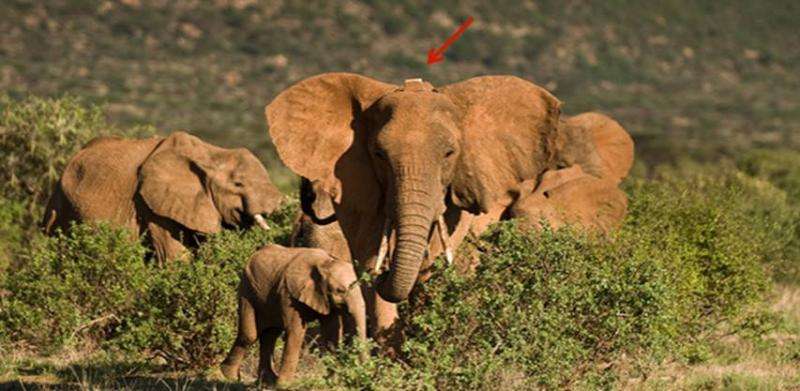Ballistic shockwave sensor is tool in fight against elephant poachers doing record-level damage

Kenyan elephants will get more protection from poachers thanks to new Vanderbilt University technology embedded in their tracking collars—ballistic shockwave sensors that send coordinates to authorities immediately after detecting gunshots.
The new system is the first use of shockwave detection technology in the intensified push to thwart illegal trafficking and save endangered African elephants. Dubbed WIPER, the project got a significant boost June 7 with awarding of a $200,000 grant from the Vodafone Americas Foundation.
The project is a joint effort between Vanderbilt computer engineering faculty and Colorado State University, which has used GPS in tracking collars for years to study and protect elephants, slaughtered by the thousands for their ivory tusks.
Elephant poachers routinely use devices to muzzle the sound from their high-powered weapons, but the blast also produces an acoustic shockwave, which cannot be suppressed. WIPER technology detects that a bullet flew by a protected elephant and sends an alarm with its location.
Vanderbilt University Professor of Computer Engineering Akos Ledeczi teamed up with George Wittemyer of Colorado State University, who is also chairman of the scientific board of Save the Elephants. The Kenya-based organization has collared more than 1,000 elephants.
The slaughter of elephants and other iconic African animals is fueled by rising demand for ivory in parts of the Far East. As demand increases, prices skyrocket and make illegal trafficking a lucrative, if risky, option. Save the Elephants estimates that 100,000 elephants were killed for their tusks between 2010 and 2012 alone as poaching efforts migrated from the Central African forests to East Africa.
Ledeczi's expertise is in acoustic shooter detection, localization and classification. He and his team have received major grants from DARPA and built multiple wireless sensor nodes to detect and locate the source of gunfire.
"Our aim is to make WIPER open-source, freely available to all collar manufacturers, so that it can become a common feature in all wildlife tracking devices," said Ledeczi, who also has received a Vanderbilt Discover Grant to support the project.
The Vodafone grant will support prototype development and field-testing for shot detection accuracy and power requirements. Next will be integrating the sensor with an existing commercial GPS collar, manufactured by partner Savannah Tracking of Kenya.
Field studies with collared elephants in Northern Kenya follow. The goal is battery power that lasts 12 months. At that point, the team envisions sensor-enabled collars on 100 elephants each year. WIPER needs only a few sensor collars per herd, because each one can cover all wildlife within a 50-meter radius.
Provided by Vanderbilt University



















